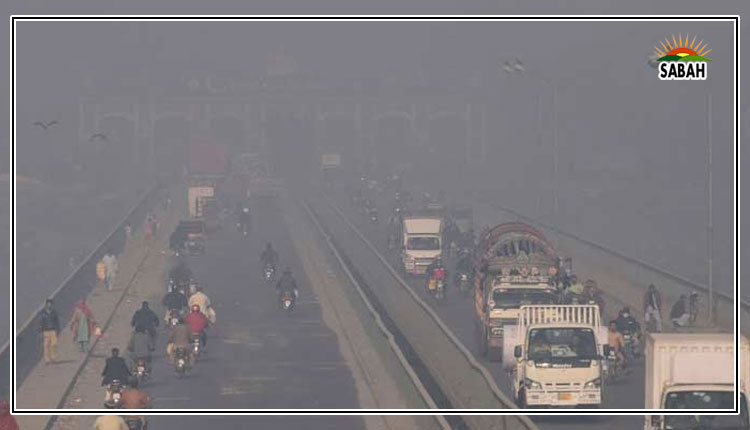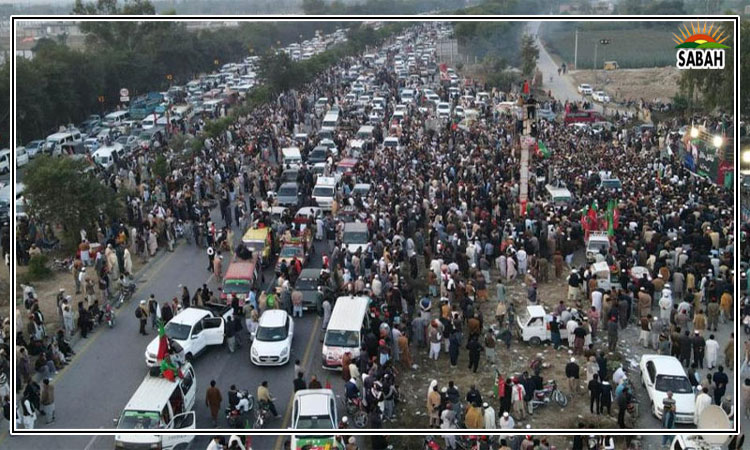A looming climate crisis…Dr Fauzia Waqar
The term climate change often raises issues of melting ice caps, raging wildfires, and rising sea levels. However, beneath these environmental transformations lies an urgent and less explored crisis: human health, especially in densely populated regions like South Asia.
Our planet is undergoing significant and long-term shifts in its weather patterns and broader climate systems. These shifts, spanning over decades, are largely the product of human actions. Our dependence on fossil fuels, rampant deforestation, and changing land-use patterns have sped up the release of greenhouse gases. These gases, accumulating in the atmosphere, trap heat, creating a greenhouse effect that results in global warming.
Climate change, a global challenge, has manifested its consequences worldwide. While both developed and developing nations face its wrath, their responses differ considerably. Developed countries, despite being major contributors to greenhouse gas emissions historically, have shown agility in adapting to and mitigating the effects of climate change. However, low and middle-income countries (LMICs) have been slower to recognize and address these dire consequences, perhaps due to limited resources or other pressing challenges.
Taking a closer look at the Western front, Californias climate has undergone significant alterations. Extreme heat events in the state have escalated since 1950, becoming notably frequent in the past decade. Such events are characterized by temperatures soaring to or above the highest five per cent of historical records. The Central Valley, known for its fruit and nut trees, has observed a diminishing winter chill, vital for these trees dormancy and subsequent flowering and fruiting.
The Palmer Drought Severity Index, a measure of a regions dryness based on temperature, precipitation, and soil moisture data, paints a concerning picture. From 2010 to 2021, nearly four years worth of months registered severe drought levels, with eight of those months plunging into very extreme drought conditions. Looking further north, Canada, despite its cooler reputation, hasnt been spared either. The nation is grappling with its most severe fire season in recent history. Over 20 million acres have succumbed to the flames, not only posing direct dangers within Canadian borders but also casting hazardous smoke over parts of the US.
Understanding the urgency of the issue, these Western countries have embarked on various initiatives. They are investing heavily in renewable energy sources, transitioning away from fossil fuels to reduce greenhouse gas emissions. Rigorous fire management and prevention techniques, including controlled burns and forestry management, are being implemented. Infrastructure is being updated and modified to cope with the changing climate, be it by building dams and reservoirs for water conservation in drought-prone areas or by strengthening buildings and homes to withstand intense heat or fires.
Public awareness campaigns are being amplified to educate citizens on the role they can play, from conserving water to preparing for extreme weather events. These nations are also collaborating on international platforms, sharing knowledge, technology, and resources, and understanding that climate change is a global challenge that transcends borders.
While these developed regions are actively combating climate changes repercussions and are often equipped with the resources to do so, the real concern lies with the LMICs. Their relatively slower response is worrisome. The tangible impacts of climate change are felt globally, irrespective of a countrys GDP or development status. Therefore, it is paramount that developing nations also comprehend the long-term consequences of a shifting climate and act with urgency.
South Asia is feeling the direct repercussions of these changes. With soaring temperatures, there has been a noticeable surge in heat-related illnesses, cardiovascular issues, kidney disorders, and respiratory complications. Cities near the Himalayas, known for their breathtaking landscapes, are now choking on their air.
The massive population in the region combined with its geographical air sheds causes harmful PM2.5 particles to be trapped, making the air a significant health risk. This isnt just about the tangible health effects, either. The World Health Organization (WHO) has shed light on a staggering statistic: Since 2020, around 250,000 deaths have been attributed to diseases directly influenced by climate change. This encompasses maladies such as heart stress, malnutrition, dengue, and malaria.
Beyond the immediate health consequences lies an economic dilemma. The WHO has projected that the direct health-related costs due to deteriorating environmental conditions could reach an astonishing $204 billion annually by 2030. This staggering number doesnt even factor in the costs associated with ensuring clean water, sanitation, and food security.
Among the many challenges brought on by climate change, flooding has become a frequent menace. Data from a study by Lancet indicates that from 2000 to 2016, there was an annual increase of 86 million people at risk from floods, with a tragic yearly rise of around 4,000 flood-related deaths.
Pakistan stands as a tragic example under the brunt of these climatic shifts. Despite its resilience, the countrys limited resources and infrastructure mean it is disproportionately affected and less equipped to tackle these challenges. Disturbingly, it is the already vulnerable sections of society, especially women and children, that bear the burden most severely. Their predicaments are often aggravated due to a lack of gender-specific interventions and strategies. This oversight not only intensifies their immediate hardships but also undermines their long-term socio-economic prospects.
In recognizing the urgency of the situation and the widespread effects of climate change on a global scale, international organizations have stepped up their efforts. The United Nations, for instance, has organized COP28, which will take place in Dubai in December 2023, with focused areas. Foremost among them is the acceleration of the global transition to clean energy sources. Theres a push to decarbonize energy, aiming to limit global temperature rise to 1.5 C above pre-industrial levels.
In conclusion, addressing this multifaceted issue demands global solidarity, informed policy-making, and immediate action to safeguard the health and well-being of millions.
Courtesy The News












